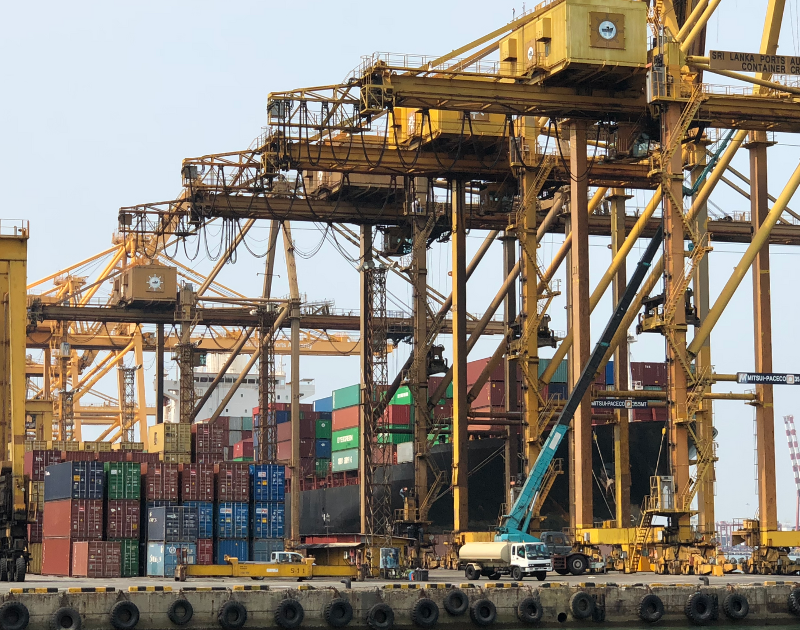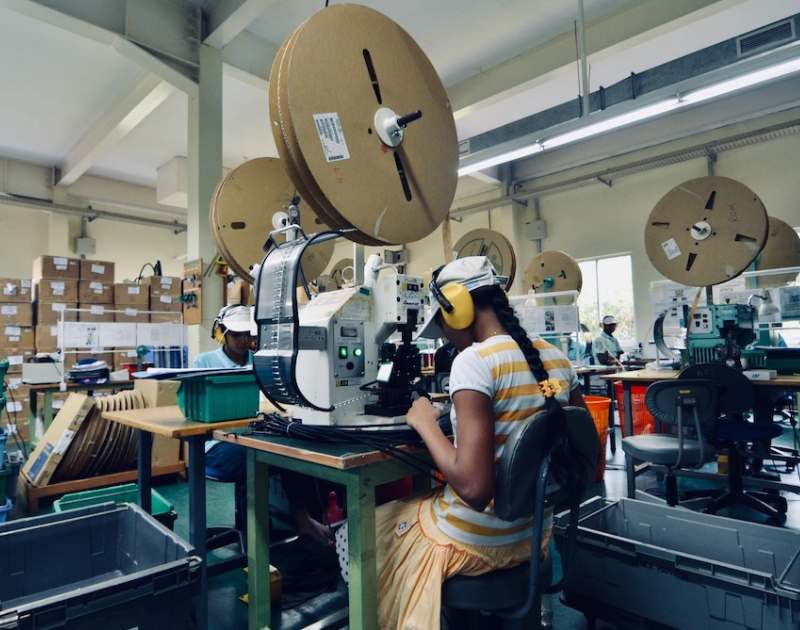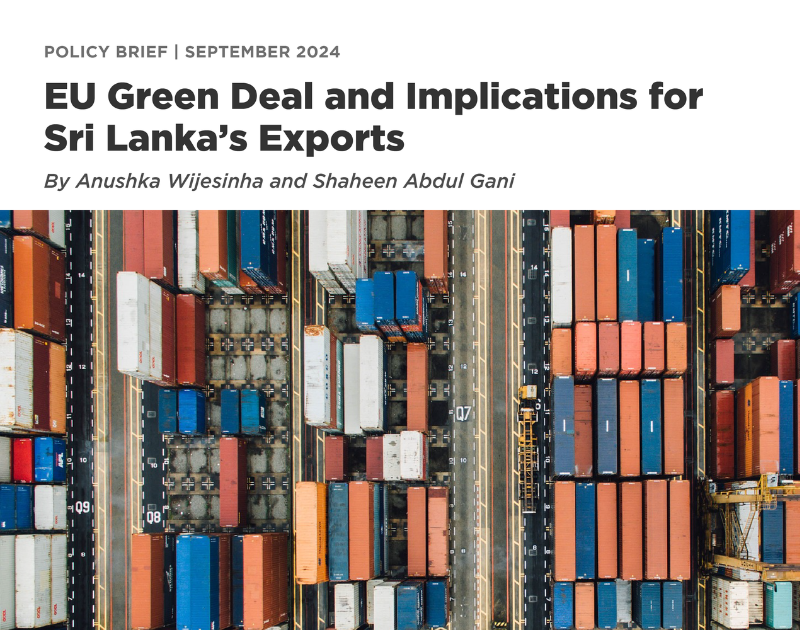
- Home
- Knowledge Insights
- Overhauling Sri Lanka’s Commercial Diplomacy Efforts Can Boost Trade and Investment Prospects
Last month (15 May), President Anura Dissanayake met with newly appointed Sri Lankan diplomats to advise them that ‘expanding opportunities to attract Foreign Direct Investment (FDI) and identifying new market opportunities for entrepreneurs’ were key duties of the diplomatic service. He was speaking to newly appointed diplomats to our missions in important trade and investment destinations, including India, Pakistan, United Kingdom, United Arab Emirates, and Japan. While the President’s message is vital and timely, unfortunately the reality is that Sri Lanka’s has consistently neglected this agenda.
Commercial diplomacy as a driver of trade and investment
The foreign service is Sri Lanka’s front line when facilitating entry into frontier export markets and responding to international shocks such as tariff increases. A growing body of international literature, including Rose (2007), establishes that diplomatic presence can have a significant positive impact on trade flows. Such impacts can vary due to factors such as the types of goods traded (Moons and de Boer 2014), the firm size of traders (Ferguson and Forslid 2019) and the type of host market (Van veestra 2011; Moons and van Bergeik 2018). On investment flows, in a meeting with the new diplomats, the head of Sri Lanka’s Board of Investment (BOI) noted that they should “leverage their networks to create opportunities for partnership and investment in Sri Lanka’s growing economy”. Though the impact of commercial diplomacy on investment inflows is less explored, Fry-McKibbin et al (2019) observed an increase in Australian FDI inflows by 22 per cent through diplomatic efforts.
President’s Message vs. the Reality
A study conducted by CSF in June 2024 for the Sectoral Oversight Committee on International Relations of the 9th Parliament highlighted that Sri Lanka’s commercial diplomacy apparatus suffers from a range of issues – from a lack of clear vision and long-term strategy, low funding and resources, unclear monitoring and evaluation, and a highly fragmented institutional environment with competing and overlapping mandates.
Key stakeholders CSF interviewed – from across the private sector and public sector (including diplomats) – highlighted that due to resource constraints, commercial officer postings are often held vacant when officers retire or shift postings. This leads to either foreign service officials lacking necessary skills and expertise engaging in commercial diplomacy, or staff assigned for commercial affairs experiencing mission creep due to increasing consular work. Due to limited and strict budget constraints and procedures, often officers find it unable to participate in strategic opportunities. In a space where professional network building pays considerable dividends, as pointed out in the Guide to Commercial Diplomacy by the International Trade Centre, Sri Lanka’s commercial officers lack the conducive environment to be ‘entrepreneurial’ in their efforts to attract trade and FDI.
As per the Ministry of Foreign Affairs Website Sri Lanka had 60 missions, and 106 honorary consuls situated in 106 countries globally, as of June 2025. Each of these posts had a mandate to advance commercial diplomacy. In addition, 28 such countries were allocated a commercial officer, though some posts remain vacant.
While commercial officer postings broadly cover the current major trade partners of Sri Lanka, such postings have not extended to countries with high potential. For instance, a preliminary analysis of Sri Lankan export data from 2014-2023 indicates that Mexico, Spain, Hungary, and Peru are countries with no missions on the ground that Sri Lanka has increasingly exported to. In contrast, Kenya, Iraq, and Netherlands are countries with significant growth in exports which have Sri Lankan missions but not commercial officers. Jordan is a country in which Sri Lanka’s exports rapidly bounced back, post-Covid but it has no commercial officer in the diplomatic mission.
Commercial diplomacy efforts, even in the countries that President Dissanayake recently appointed diplomats to need renewed focus if Sri Lanka is to increase trade and investment flows. As of June 2025, the Department of Commerce indicates that the allocated commercial officer posting for Japan remains vacant. Similarly, though two commercial officer posts are allocated to the United Kingdom, one is indicated as vacant. Sri Lanka’s exports to both these countries have seen a decline on average over the past decade, indicating a critical need for a consistent strategy to eliminate barriers and find new opportunities.
Actioning the President’s Message
As Sri Lanka is pushed to explore alternative markets and forge new partnerships, commercial diplomacy must be utilised as a proactive mechanism. While fiscal constraints persist, policies can focus instead on establishing long-term commercial diplomacy strategies for high-potential economies and bridging the gap between the private sector and the commercial diplomatic apparatus.
In April 2025, a multi-institutional dialogue took place between Sri Lankan overseas missions, exporters, and industry professionals. It is encouraging to note that leadership was jointly provided by the Ministries of Foreign Affairs, Foreign Employment and Tourism, Ministry of Industry and Entrepreneurship Development and the Sri Lanka Export Development Board (EDB). Formalising such platforms and fostering consistent cross-institutional engagement is key to align diplomacy efforts with strategic economic needs.
Here are five urgent action points for Sri Lanka to advance commercial diplomacy and meaningfully act on the message that the President gave to the diplomatic service to drive FDI and expand markets for our businesses.
A version of this article originally appears in the Daily FT newspaper of 13th June 2025.
Contents of this article draws from a Policy Note ‘Responding to Global Economic Challenges: Eight Priority Trade and Competitiveness Reforms for Sri Lanka’ (April 2025) and work done by CSF researchers for the Parliamentary Sectoral Oversight Committee on International Relations.
References
Ferguson, Shon, and Rikard Forslid. “Sizing Up the Impact of Embassies on Exports.” The Scandinavian Journal of Economics 121, no. 1 (2019): 278–97. https://doi.org/10.1111/sjoe.12260.
Fry-McKibbin, Renée, and Than Thuong Nguyen. “Does Commercial Diplomacy Overcome Impediments to International Economic Flows? The Case of Australia.” The Hague Journal of Diplomacy 14, no. 4 (November 15, 2019): 379–401. https://doi.org/10.1163/1871191X-14011015.
Moons, Selwyn, and Remco de Boer. “Economic Diplomacy, Product Characteristics and the Level of Development.” SSRN Scholarly Paper. Rochester, NY, September 2, 2014. https://doi.org/10.2139/ssrn.2544592.
Rose, Andrew K. “The Foreign Service and Foreign Trade: Embassies as Export Promotion.” The World Economy 30, no. 1 (January 2007): 22–38. https://doi.org/10.1111/j.1467-9701.2007.00870.x.
Van Bergeijk, Peter A.G, and Selwyn J.V. Moons. “Introduction to the Research Handbook on Economic Diplomacy.” In Research Handbook on Economic Diplomacy, edited by Peter A.G. Van Bergeijk and Selwyn J.V. Moons. Edward Elgar Publishing, 2018. https://doi.org/10.4337/9781784710842.00005.
Veenstra, M. L. E. H. van et al. 2011, The geography of trade and the network effects of economic diplomacy in the South. In M. Murshed et al. (eds) South-South Globalization: Challenges and Opportunities for Development Routledge, pp. 172- 193.
Cover image courtesy here under Creative Commons License.


